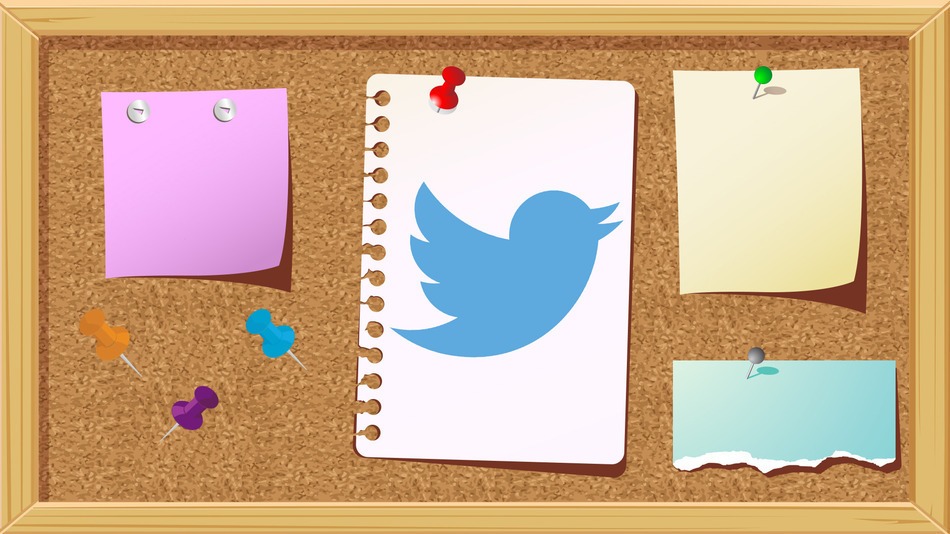Twitter diplomacy, also “Twiplomacy” or “hashtag diplomacy,” refers to the use of social network and microblogging website, Twitter, by heads of state, leaders of intergovernmental organizations (IGOs), and their diplomats to conduct diplomatic outreach and public diplomacy.[1]
Twitter has taken on diverse and occasional roles in diplomatic communications, from cordial announcements of bi-lateral cooperation to terse exchanges and diplomatic jabs, as well as more casual posts.[2]
Contents
Origins of Twitter diplomacy
The use of Twitter by world leaders and diplomats was on the rise as of April 2014, but Twitter diplomacy was only one aspect of the growing trend toward digital diplomacy, also known as eDiplomacy or Facebook diplomacy, by many world governments.
Twitter and diplomacy
As of April 2014, an estimated 241 million active users had joined Twitter.[3] Twitter also offers policymakers the possibility to hear the many perspectives of a worldwide audience.
World leaders and their diplomats have taken note of Twitter’s rapid expansion and have begun using it to engage with foreign publics and their own citizens. US Ambassador to Russia, Michael A. McFaul has been attributed as a pioneer of international Twitter diplomacy. He used Twitter after becoming ambassador in 2011, posting in English and Russian.[2] A 2013 study by website Twiplomacy found that 153 of the 193 countries represented at the United Nations had established government Twitter accounts.[4] The same study also found that those accounts amounted to 505 Twitter handles used by world leaders and their foreign ministers, with their tweets able to reach a combined audience of over 106 million followers.[4]
Commenting in a 2013 publication on the subject for the Geneva-based, non-profit Diplo, former Italian Foreign Minister Giulio Terzi said of Twitter diplomacy, “Social media exposes foreign policymakers to global audiences while at the same time allowing governments to reach them instantly… Twitter has two big positive effects on foreign policy: it fosters a beneficial exchange of ideas between policymakers and civil society and enhances diplomats’ ability to gather information and to anticipate, analyze, manage, and react to events.”[5]
Twitter diplomacy and controversy
Confrontations via Twitter diplomacy are visible to a worldwide audience because of Twitter’s global nature.
In April 2014, tensions between the US State Department and the Russian Russian Ministry of Foreign Affairs over the 2014 Crimean crisis devolved into dueling tweets, with both ministries using the hashtag #UnitedforUkraine to convey opposite points of view.[6] [7]
Tweeting to a global audience also poses challenges to leaders and diplomats. In early 2014, Iranian President Hassan Rouhani decided to delete a controversial tweet that received much media attention, though it was likely intended for his domestic audience.[8]
Use by governments and intergovernmental organizations
Twiplomacy’s 2013 study provided new insight into the use of Twitter by governments. Twitter registration by region includes:[4]
- Africa: 71% of governments
- Asia: 75% of governments
- Europe: 100% of governments
- North America: 18 governments
- Oceania: 38% of governments
- South America: 92% of governments
By heads of state and government
US President Barack Obama is credited as being the first head of state to establish a Twitter account, originally affiliated with his 2008 presidential campaign, on March 5, 2007 as user number 813,286.[4] He is also the most followed head of state on Twitter.[9] With over 42 million followers as of April 2014, he is the third most-followed person on Twitter behind pop stars Katy Perry and Justin Bieber.[10]
Other heads of state and government to pioneer the conduct of Twitter diplomacy include Mexican president Enrique Peña Nieto, Belgian Prime Minister Elio Di Rupo, and Canadian Prime Minister Stephen Harper, all of whom joined Twitter in 2007.
By leaders of intergovernmental organizations
As of April 2014, the United Nations (UN) is the most followed intergovernmental organization,[11] with its website showing over 2.56 million viewers in April 2014.[12] Many of the UN’s subordinate funds and agencies also attract large numbers of followers. The United Nations Children’s Fund achieved greater popularity than its parent organization, the UN, and is followed by over 2.69 million as of April 2014.[13]
By diplomats and diplomatic missions
Former Israeli ambassador to the United States, Michael Oren, echoed the sentiment of many diplomats when responding to a May 2012 question about why he joined Twitter: “Today there are few alternatives as far-reachng and effective, with very wide audiences and young audiences, as Twitter. Twitter is another tool that enables me to communicate with other diplomats and journalists, while also allowing me to add a personal touch.”[14]
Foreign ministries have caught on, and some are making efforts to advertise their presence on Twitter. The UK Foreign and Commonwealth Office, for example, published a consolidated list of all UK missions on social media.
The US State Department, one of the leaders in digital diplomacy, maintains an active presence on Twitter. Although former US Secretary of State Hillary Rodham Clinton encouraged American diplomats to tweet, she did not establish her personal handle until 2013, after she had already left office.[15] Current Secretary John Kerry re-activated his personal Twitter handle after one year on the job.[16] Former US ambassador to the Russian Federation, Michael McFaul, pioneered the use of Twitter for American ambassadors with a steady stream of English/Russian tweets during his 2011-2014 tenure.[17] [18] An academic by trade and not a career diplomat, Ambassador McFaul’s tweets were generally blunt and un-polished–uncommon characteristics in the diplomatic world–earning both frequent criticism from the Russian government and praise from his supporters.[19]
Notable use by civil society
Non-governmental organizations
Of the 99 international organizations covered by Twiplomacy’s 2013 study, Greenpeace has tweeted the longest; it registered with Twitter on April 4, 2007.[20]
The most followed non-governmental organization is the World Wildlife Fund, with over 1.33 million followers. Its followers are also highly active, with each of its tweets being re-tweeted an average of 69 times.[4]
Activist and opposition groups
Twitter also allows activist and opposition groups the possibility to achieve the same cyber presence as sovereign governments. Whereas printing assets and distribution networks are required for the dissemination of printed word, the internet and Twitter allow anyone with internet access and an operating device to access a global audience.
Twitter’s use by opposition groups gained much attention during the Arab Spring uprisings of 2010, when Twitter was credited with being used to rally protestors in various countries.[21] [22] More recently, in Turkey, Prime Minister Recep Tayyip Erdoğan blocked access to Twitter in May 2014 due its widespread use by political opponents and activists.[23]
Religious groups
Religious organizations have long been vocal and influential in international relations, and are now starting to be heard on Twitter.
The Roman Catholic Pope, Pope Francis, is one of the most-followed and influential world leaders. His English-language Twitter alone, one of several registered to the Pope, boasts nearly 4 million viewers. More telling, however, is that each of his tweets are re-tweeted an average of 8,219 times; he is re-tweeted an average of 11,116 times on his Spanish-language handle.[4]
Academia and policy advisors
Academics and policy advisors are also prolific on Twitter. Notable scholars and policy thinkers, previously reachable only by one-way articles or television appearances, are now available for instant, two-way communications with both policy makers and the general public.
The Think Tank and Global Society Program of the University of Pennsylvania annually ranks the most influential think thanks in the world, and all of its top picks for 2013 are highly active on Twitter: Brookings Institution, Chatham House, and the Carnegie Endowment for International Peace. The goal of think tanks is traditionally to bridge the gap between policy and knowledge, and their presence on Twitter allows them to enter into instant conversations with their target audience.
Further reading
- Andreas Sandre “Twitter for Diplomats“, report for Geneva-based, non-profit Diplo (2013)
- “Twiplomacy: Heads of state and government on Twitter, July 2013“, Twiplomacy study (July 2013)
References
- Keleman, Michele (21 February 2014). “Twitter Diplomacy: State Department 2.0”. National Public Radio. Retrieved 28 April 2014.
- Landler, Mark (4 February 2014). “In the Scripted World of Diplomacy, a Burst of Tweets”. International New York Times. Retrieved 28 April 2014.
- Twitter. “About Twitter, Inc.”. Retrieved 26 April 2014.
- “Twiplomacy Study 2013 – International Organisations”. Twiplomacy.com. Retrieved 27 April 2014.
- DiploFoundation. “Twitter for Diplomats”. Retrieved 26 April 2014.
- Ishaan, Tharoor. “Russia hijacks U.S. State Department’s Ukraine hashtag”. Washington Post. Retrieved 27 April 2014.
- Foxnews.com (26 April 2014). “Obama’s hashtag diplomacy with Russia sparks new criticism about weak foreign policy”. Fox News. Retrieved 28 April 2014.
- Loguirato, Brett. “Iran’s President Deleted A Controversial Tweet”. Business Insider. Retrieved 27 April 2014.
- Miles, Tom (26 July 2012). “@tweeter-in-chief? Obama’s outsourced tweets top twitocracy”. Reuters. Retrieved 28 April 2014.
- Twitter. “Twitter top 100 most followed – Twitter Counter”. Retrieved 26 April 2014.
- Twiplomacy. “Twiplomacy 2013 – How International Organizations Tweet”. Retrieved 28 April 2014.
- “United Nations (UN) on Twitter”.
- “UNICEF (UNICEF) on Twitter”.
- Tracy, Marc. “Israeli Ambassador Michael Oren Talks About Why He Joined Twitter”. The Tablet. Retrieved 27 April 2014.
- Thomas, Ken (2013). “Hillary Clinton starts Tweeting”. AP. Retrieved 28 April 2014.
- Gearan, Anne (4 February 2014). “John Kerry unleashed on Twitter once again”. Washington Post. Retrieved 28 April 2014.
- Elder, Miriam (29 May 2012). “Michael McFaul, US ambassador to Moscow, victim of Kremlin ‘Twitter war‘“. Guardian. Retrieved 28 April 2014.
- Lally, Kathy (11 January 2014). “U.S. ambassador in Moscow uses social media to bypass official line”. Washington Post. Retrieved 28 April 2014.
- Lally, Kathy (11 January 2014). “U.S. ambassador in Moscow uses social media to bypass official line”. Washington Post. Retrieved 28 April 2014.
- Twiplomacy. “Twiplomacy 2013 – How International Organizations Use Twitter”. Retrieved 28 April 2014.
- Beaumont, Peter (25 February 2011). “The truth about Twitter, Facebook and the uprisings in the Arab world”. Guardian. Retrieved 28 April 2014.
- Huffington Post. “Twitter Arab Spring”. Retrieved 28 April 2014.
- McCoy, Terrence (21 March 2014). “Turkey bans Twitter — and Twitter explodes”. Washington Post. Retrieved 28 April 2014.
https://en.wikipedia.org/wiki/Twitter_diplomacy
| This article is being considered for deletion in accordance with Wikipedia’s deletion policy. Please share your thoughts on the matter at this article’s entry on the Articles for deletion page. Feel free to edit the article, but the article must not be blanked, and this notice must not be removed, until the discussion is closed. For more information, particularly on merging or moving the article during the discussion, read the Guide to deletion. |
| Some or all of this article’s listed sources may not be reliable. (April 2014) |
|
|
This article is written like a personal reflection or opinion essay rather than an encyclopedic description of the subject. (April 2014) |














